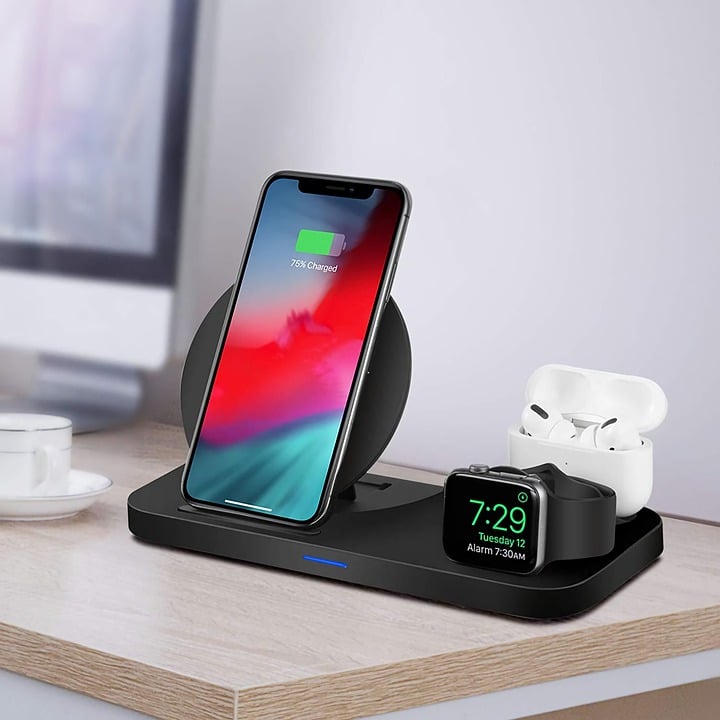How To Get The Most Out Of Wireless Charging

Many gadgets, including headphones and smartphones, no longer require a wire to get power from the socket. Now, we have the wireless charging option that offers a very straightforward way to recharge. However, just like it's the case with every new methodology, wireless charging also has its pitfalls that you need to understand to get the most out of it. Below, we've highlighted six tips that you need to benefit fully from wireless charging and enhance your experience.
- Confirm That Your Device Supports Wireless Charging
While modern gadgets, including tablets and wireless headphones, have a cabled charging connection, not all support wireless charging. In most cases, only the mid-range to premium devices will support wireless charging. So, if your smartphone costs more than $800 at the store, the chances are that it also supports wireless charging. However, it's advisable to check with the retailers before purchasing to ensure that the price tag does not mislead you.
- You Can Add Wireless Charging on Your Phone
If your phone doesn't support wireless charging, you can still add the feature. There are numerous third-party companies selling converters in the form of full phone cases that connect the charging coil behind the case to your phone's plug port. However, not all phones have this option. Besides, incorporating the third-party option means that you'll be committing only to wireless charging as the new plug adapter will cover the standard charging port.
- You Don't Have to Worry About a Unique Brand
During the early days of wireless charging, competing wireless data transmission standards emerged. Each company had its own model of data transmission systems suitable to specific devices only. Everyone's phone seemed not to fit in one charger and there needed to be a different charger for each phone.
This is no longer a problem with modern wireless charging. The industry has now settled on a common charging standard, meaning that you can drop an Apple Magsafe wireless-capable phone onto a Samsung wireless charger, and it'll take power in precisely the same way. The reverse is true, too, meaning that you can be flexible on what type of wireless charger you are buying for all different devices.
The flexibility in wireless charging goes beyond the wireless plates and standard plugs. We now have everything to facilitate smooth wireless charging, from battery packs that no longer require a wall connection to luxury vehicles so you can charge on the go.
- Wired Charging Maybe Faster Than Wireless Charging
If you want your device to charge pretty fast, the wire option remains the best option. The wireless option's charging speed is standard, although there are differing power charge rates. For instance, earlier iPhone versions were limited to 7.5W wireless charging, but the latest models handle about 15W chargers. That does mean that wireless is the better option as the same 15W-capable device can handle up to 30W on a wired charger.
But what slows down the wireless charger? Partly it's to do with safety. Manufacturers want to ensure that a wireless charger or the connected device doesn't transfer massive loads that could lead to an inadvertent shock. Also, the inefficient power transfer method associated with the wireless charger affects the charging rate.
You may realize that some phones juice up power faster on specific wireless chargers than others. Technically, the slower charging systems are budget-friendly ones supplied with the phone. Nonetheless, no wireless-capable smartphone will charge more quickly than it can through a wired connection.
In other words, you trade the wireless charging convenience for time. So, you may not have a problem charging up your phone overnight over a wireless charger. Similarly, don’t expect an uptick from a wireless charger when you desperately need some power or you have limited time.
- Phone Cases Affect Wireless Charging
Covering your phone with a protective case is a good idea because phones aren't that cheap to leave exposed to falls and elements. However, if wireless charging is your thing, you should know that some cases make it harder or impossible to charge efficiently.
The commonly used Qi-standard wireless charger allows up to 4 cm distance. But realistically speaking, no one transmits power at such a distance in the current consumer gear. It would help if you had close contact, and cases can be obstacles, especially depending on the material from which they are made. In this case, thinner cases will function better, and it's advisable to look for a MagSafe compatible case if you own a “MagSafe” compatible iPhone. The main issue here should not be the magnetic aspect, but the ability to work without issues on wireless chargers.
- Placement Is Everything in Wireless Charging
Note that wireless chargers work through the induction coil found in the charger and the device. Therefore, the coils have to be reasonably close to each other for the power connection to work. It does not necessarily mean being millimeter-level, but being pushed off-base could cause problems. In the same way, some orientation challenges on the wireless charger may arise from the size of the charging plate in relation to the phone.
One smart solution to this is the iPhone's “MagSafe” magnet that attaches the wireless charging, so the phone clicks into place. Another solution is Google's smart Pixel Stand, which uses vertical and angled plates to help your phone rest on the spot and line up nicely with the charging coils.
The easiest way to tell if the wireless charger is working is to check for a notification once you connect. Simply look at the battery icon on your phone's screen and check whether a lightning bolt appears.
